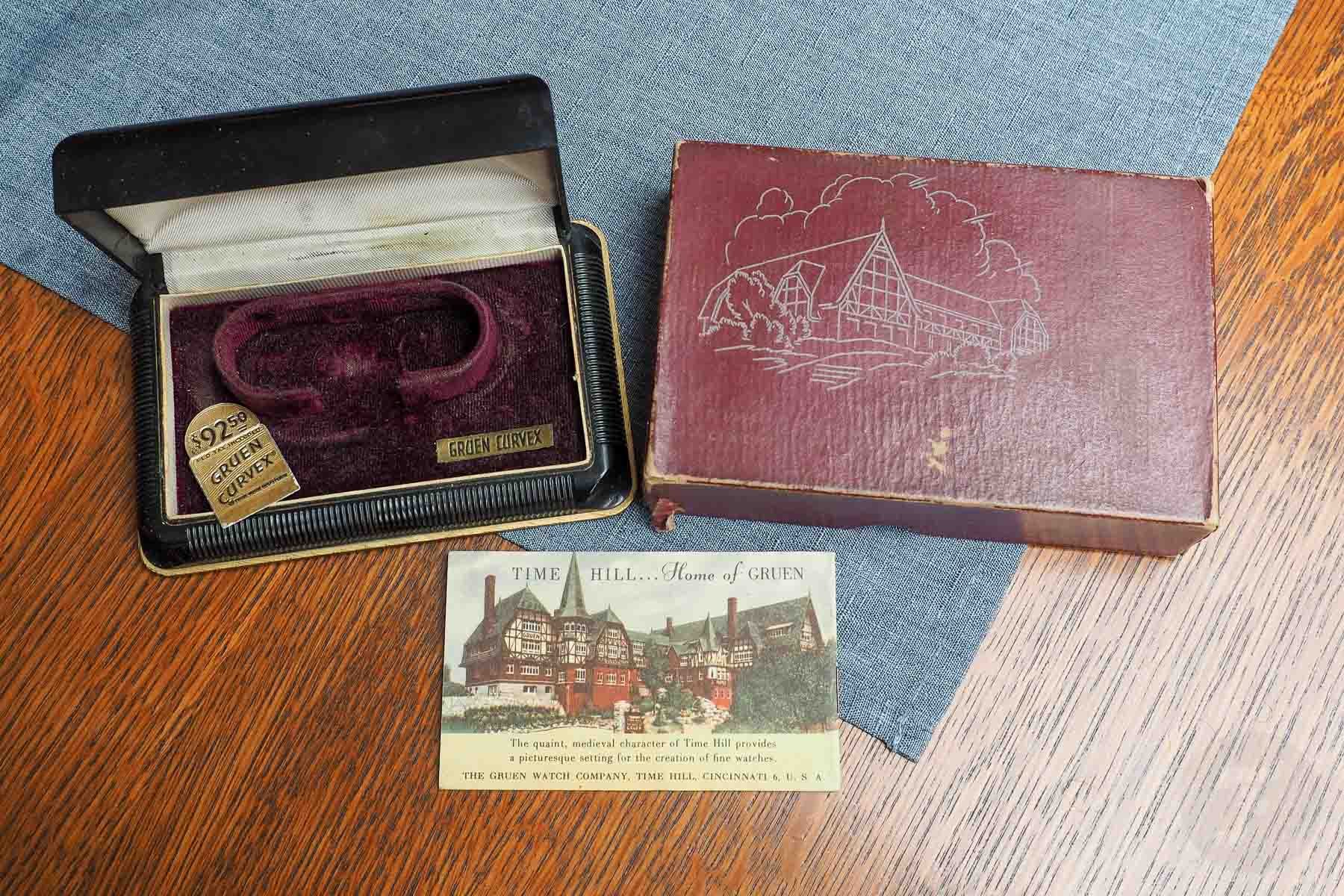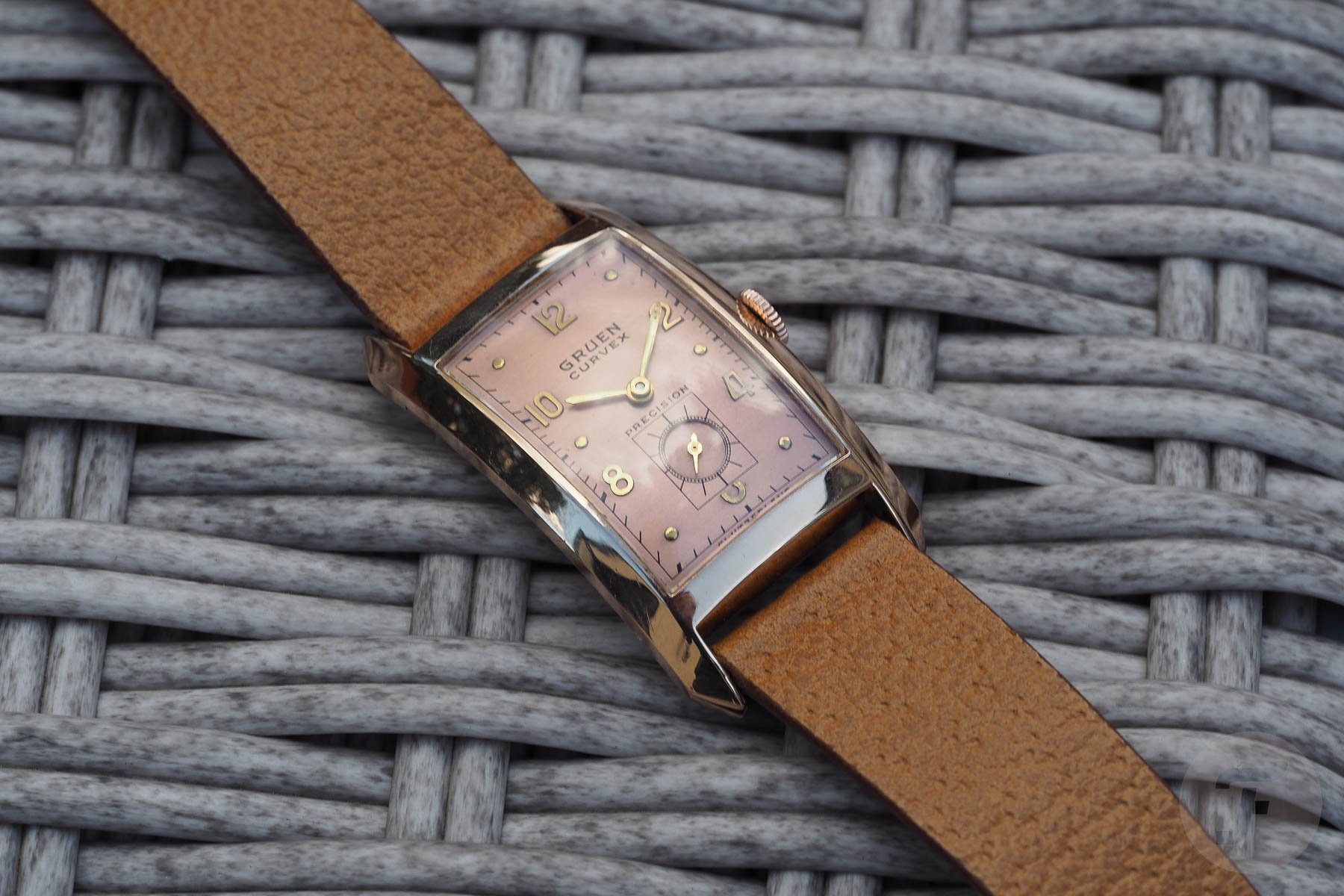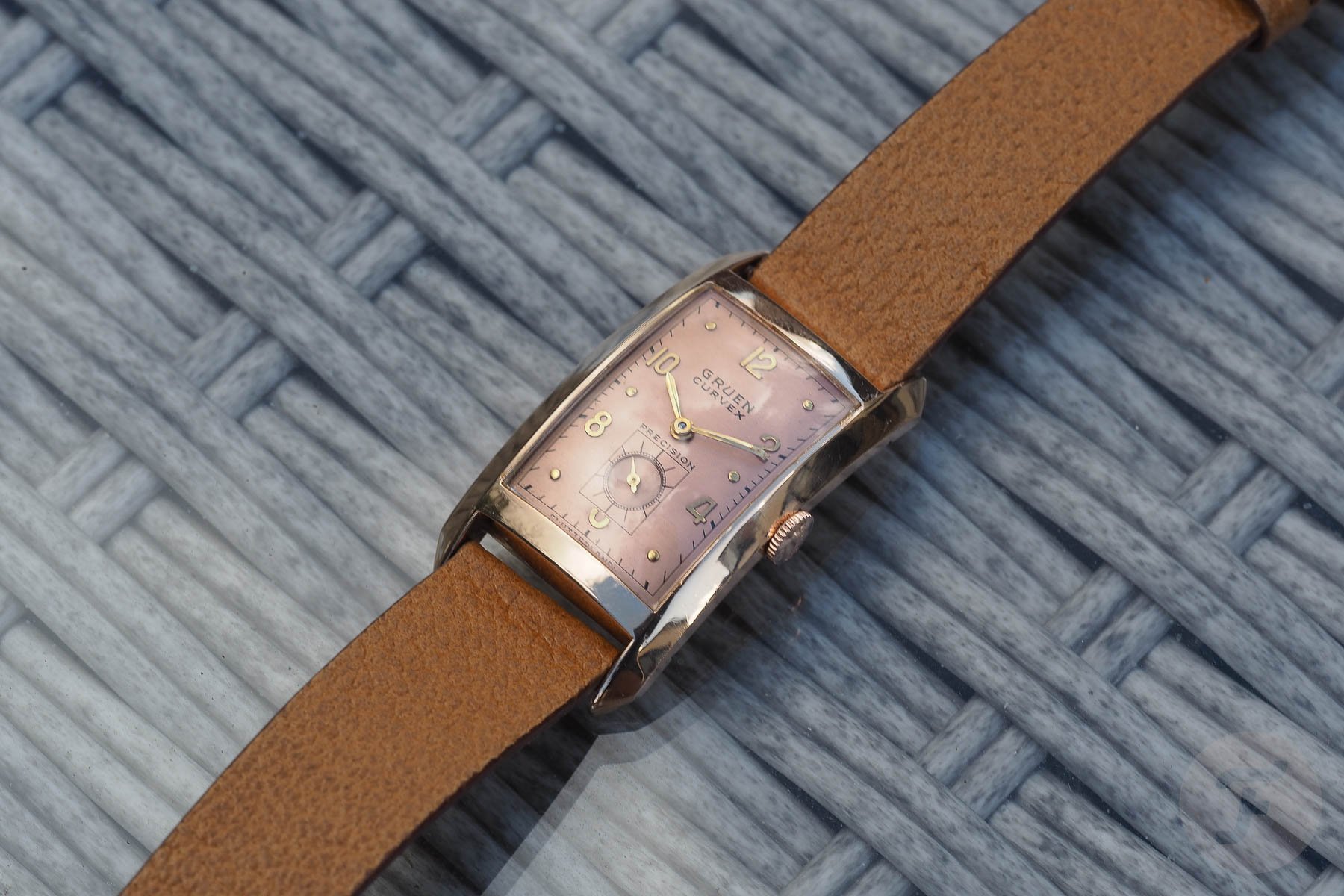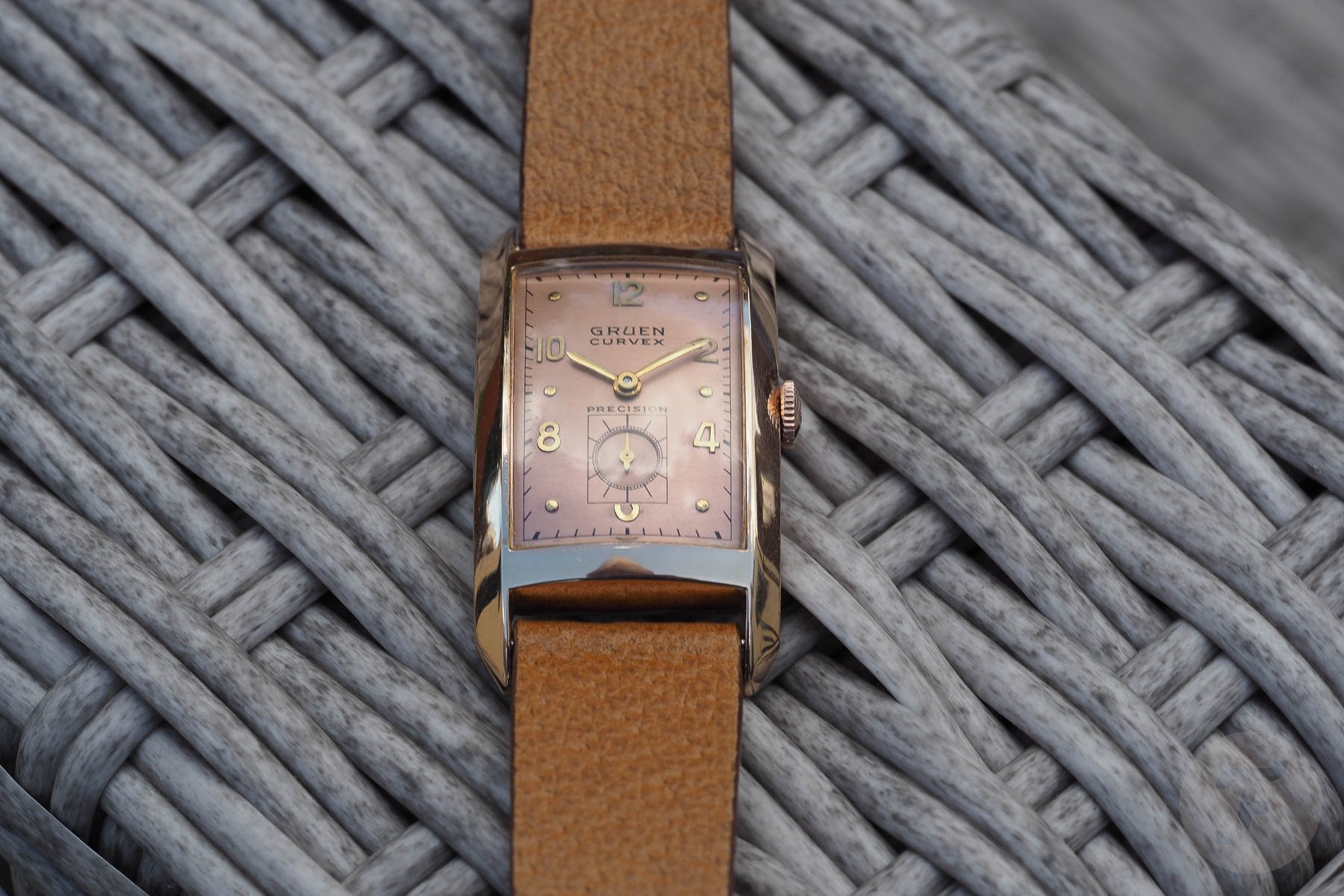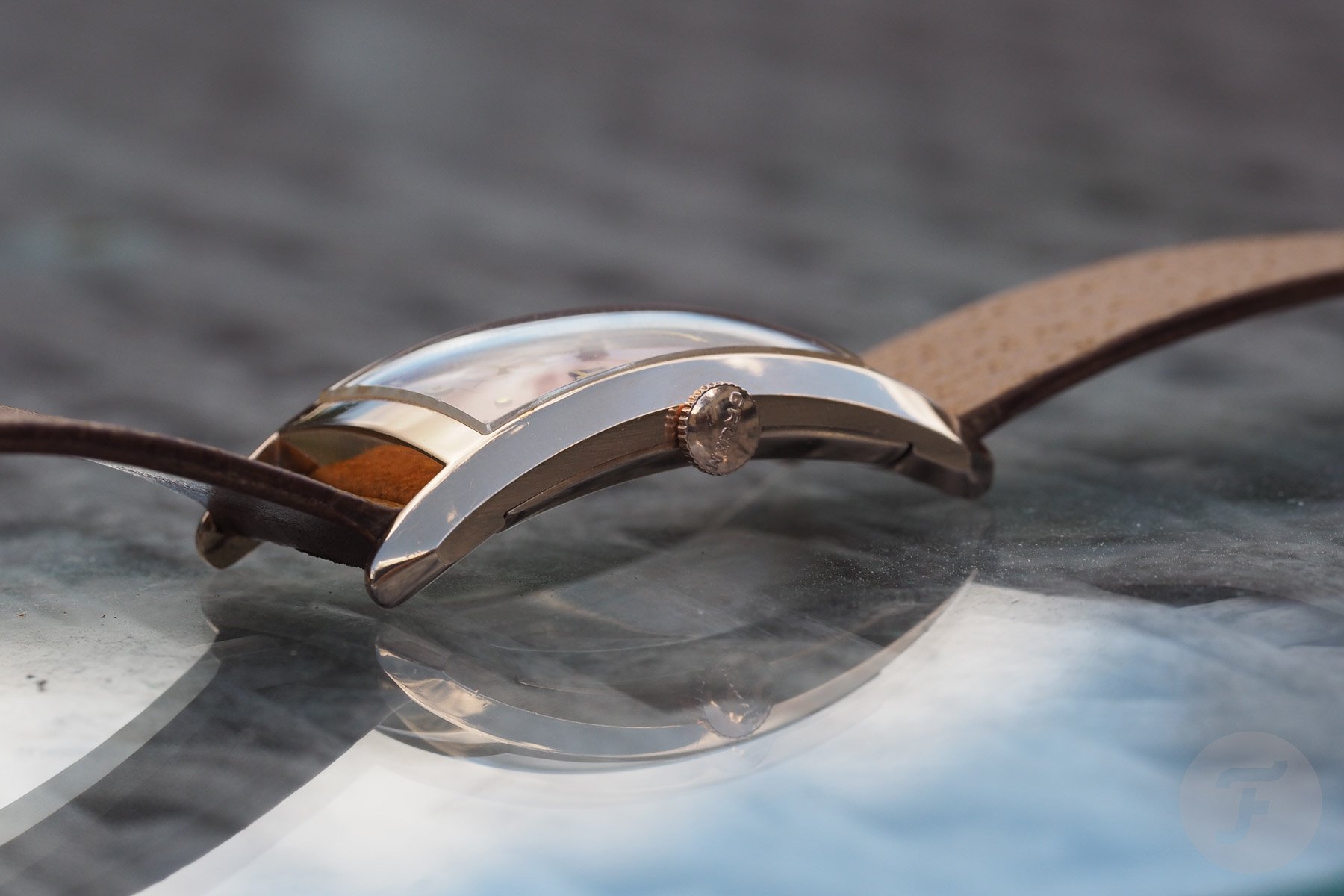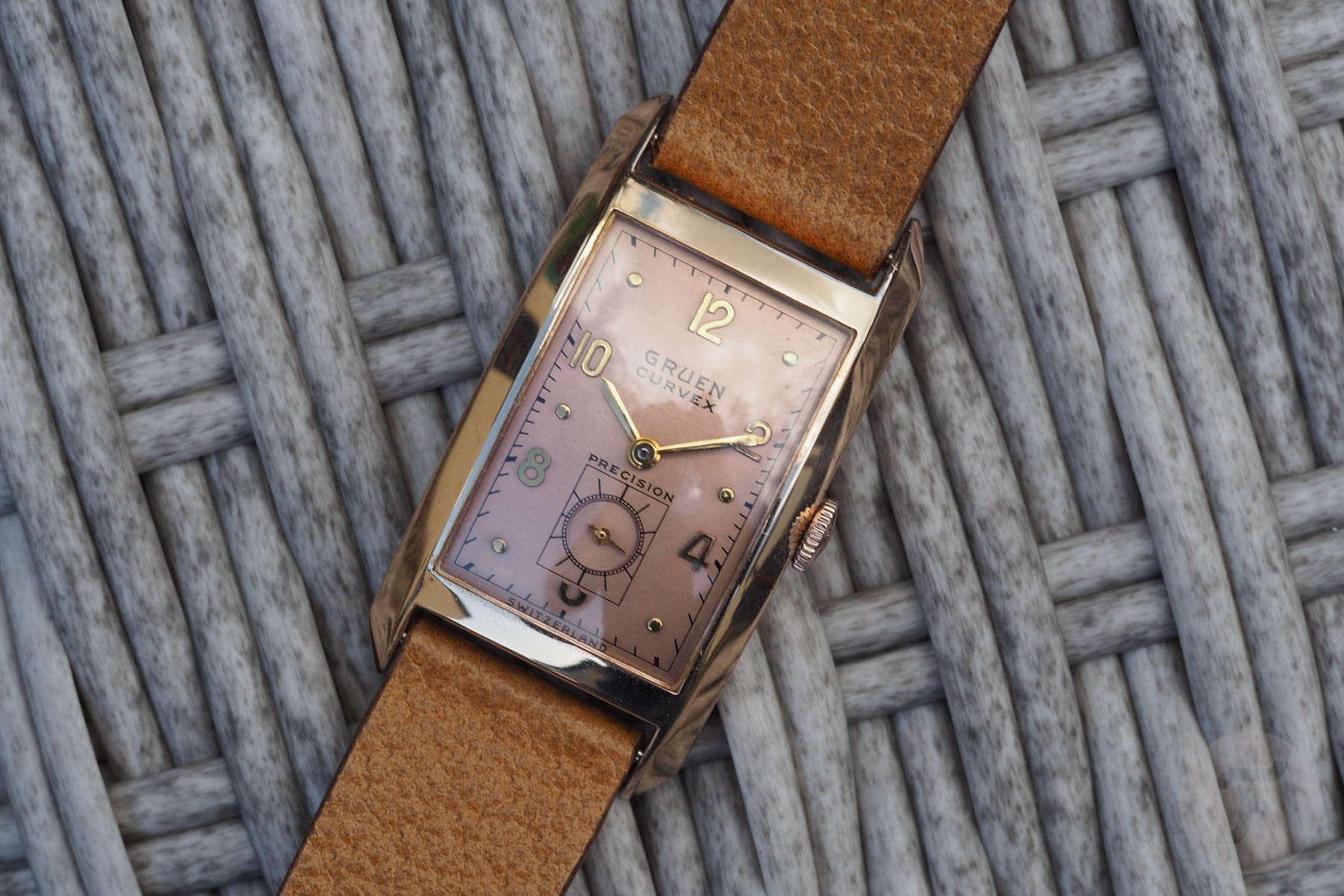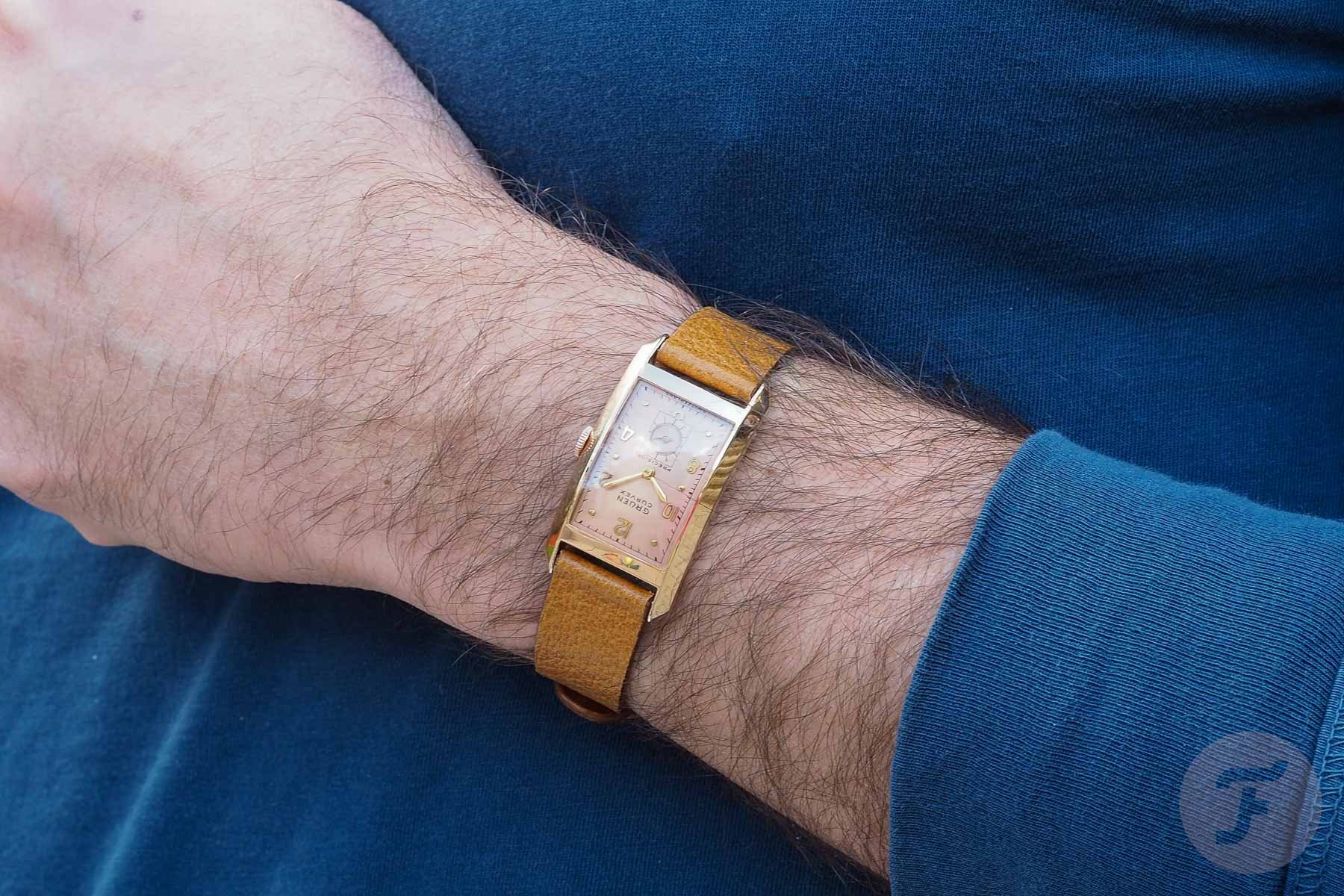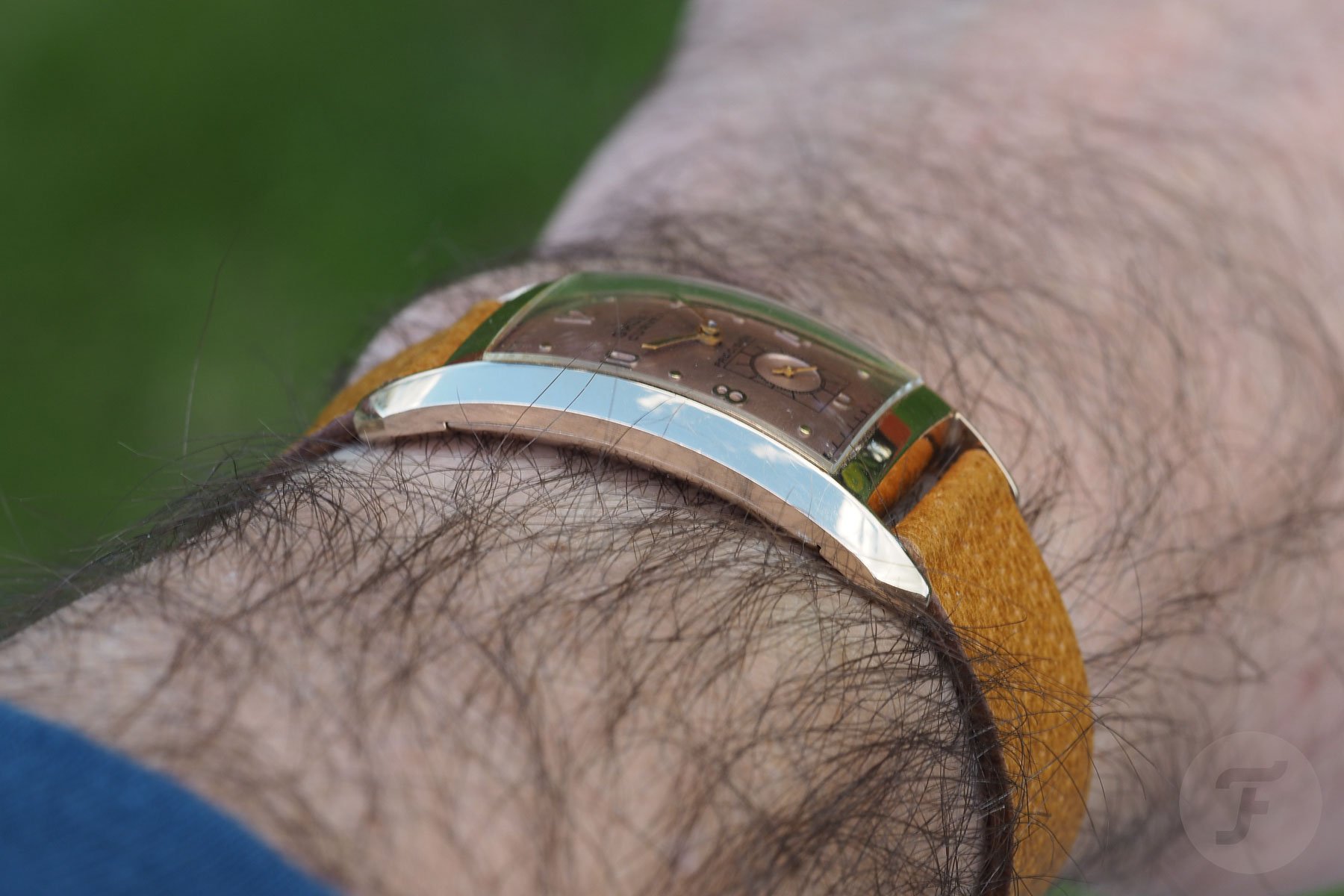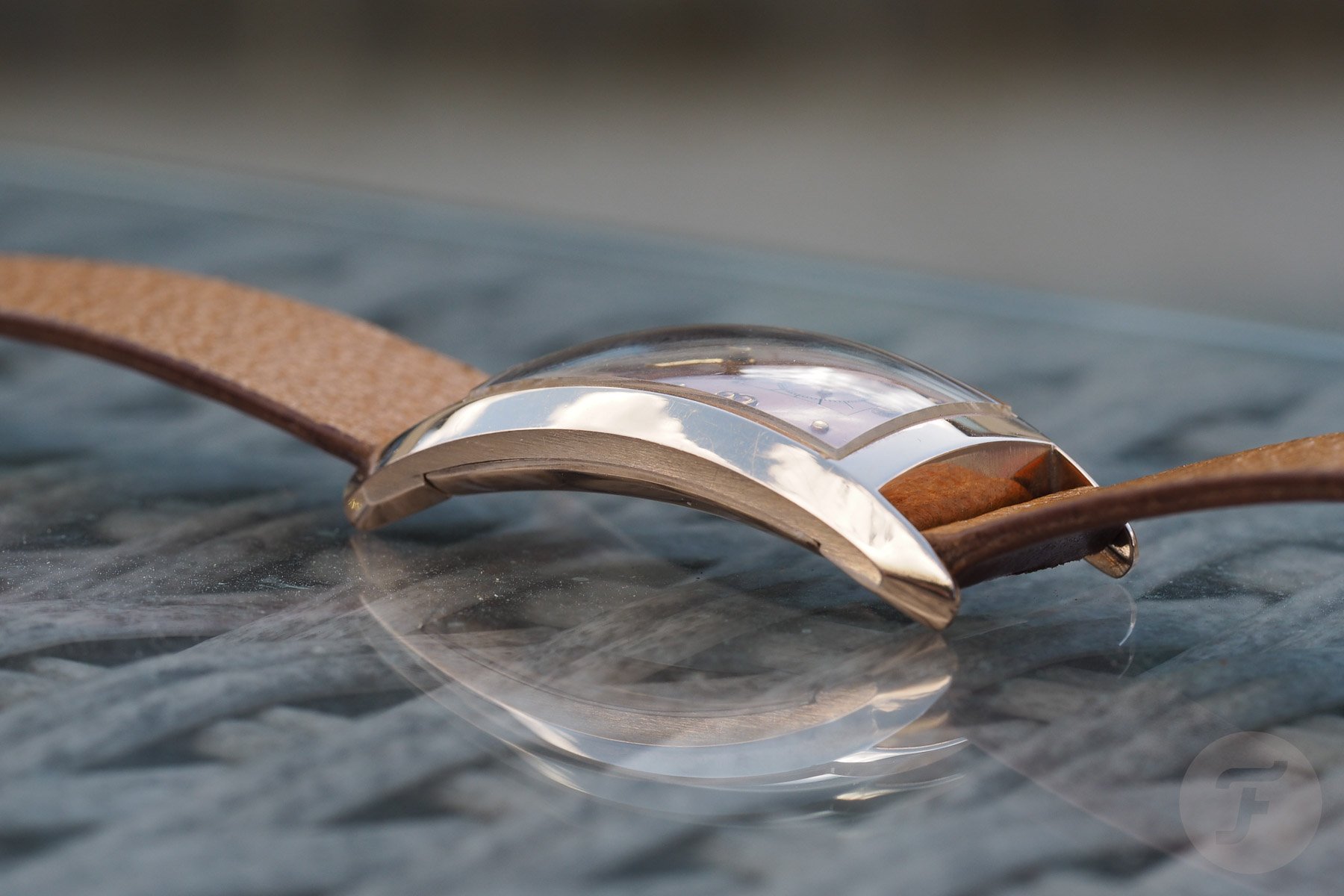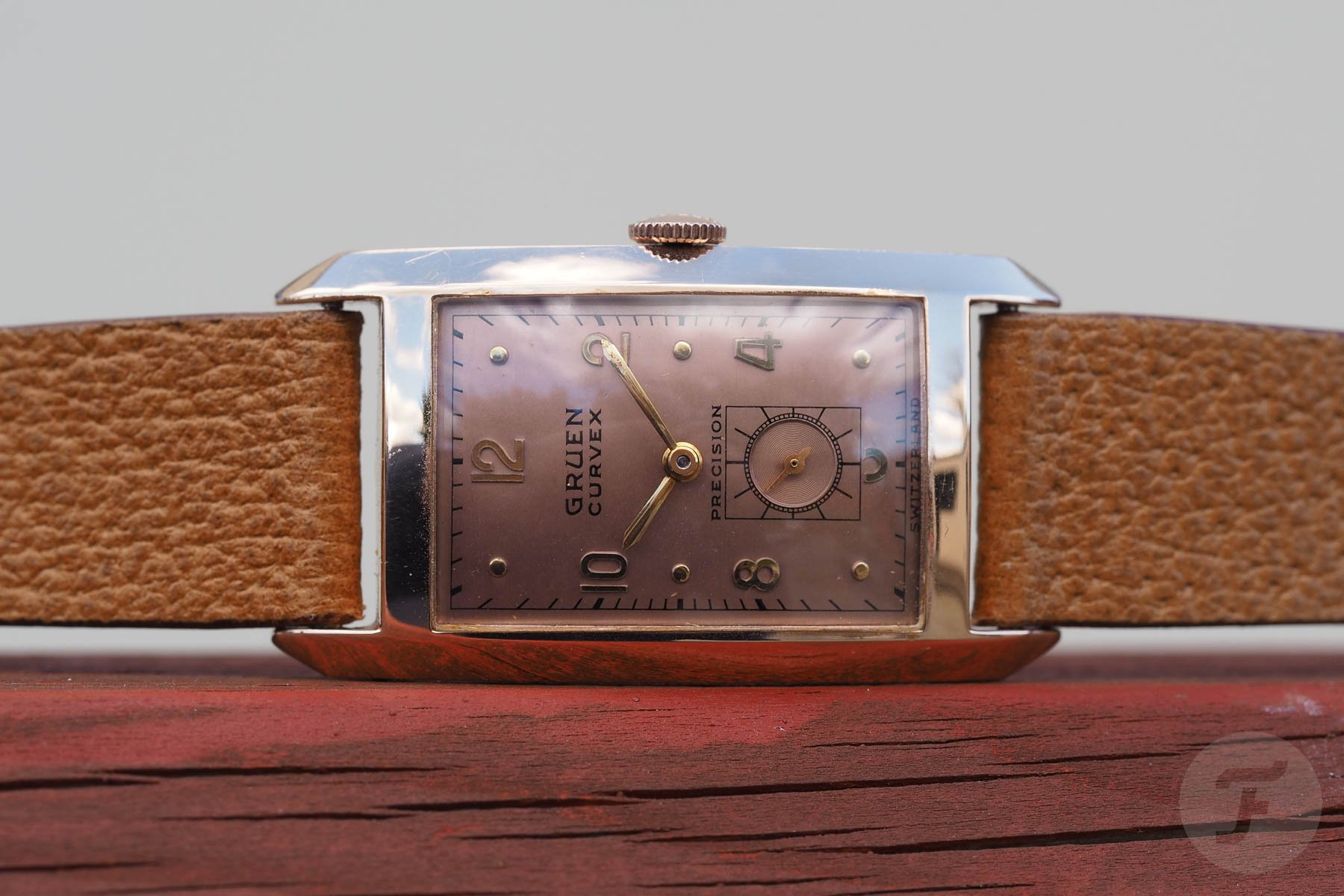Vintage Watches: The Gruen Curvex Lieutenant
The Gruen Curvex certainly ranks as an important line of historical watches. These pieces used a variety of curved cases and curved movements. During their two decades of production, they were the pinnacle of style and rivaled more expensive brands. Gruen also has a deep tie to America, which brings something different to the story.
The Gruen Curvex is hardly unknown, but it often escapes mention when collectors discuss iconic pieces from the more formative years of the wristwatch. The Curvex line of watches debuted in 1935 and was revolutionary due to the curved, wrist-hugging case designs. More importantly, the watches contained curved in-house-designed movements that followed their case shapes. The significance is that many brands began offering similarly curved watches but used small, flat movements. The Curvex was made until the mid-’50s in a dizzying array of case styles and materials. Today, we will examine a lovely Gruen Curvex Lieutenant from 1945.
Gruen — some history
Gruen has an interesting history as a brand. German-born Dietrich Grün founded the brand in 1894 and moved in 1898 to the city that would become Gruen’s forever home, Cincinnati, Ohio. He worked with his two sons to design movements produced by some of the most reputable watchmakers in Europe. Names like Assmann, Moritz Grossmann, and Aegler (of Rolex fame) are just some of the names involved with the brand’s earliest watches. Then, in 1930, there were co-branded Alpina-Gruen watches. But it was in 1935 that the Gruen Curvex made its introduction.
Before we discuss the Curvex, let’s spend more time on history. Gruen is often grouped into the same category as American brands like Hamilton, Benrus, and Elgin. However, some consider Gruen’s watches Swiss. Aside from a brief period in the late 1950s (there were USA-made movements!), the brand’s calibers came from Europe. However, Gruen designed its movements in the US and imported them. Cases were made in America, and the assembly was done in a beautiful European-styled headquarters above the “Queen City.”
The Gruen Curvex
The Gruen Curvex, in any form, is a wonderful example of why vintage watches are so interesting. The watches have anatomically correct curved cases that hug the wrist of the wearer. The real innovation, though, was the use of a curved movement. Per the vintage ad above, Gruen touts the benefits of the curved caliber for two reasons. First, the company claims that this larger movement has “pocket-watch accuracy.” Next, the fact that it takes up all of the interior space supposedly makes it more rugged. Over nearly two decades, Gruen used four in-house calibers for the Curvex line. Gruen made many curved watches, but the 311, 330, 440, and 370 are the only true Curvex movements per this highly informative site.
A wild number of variants
The Gruen Curvex was available in over 200 styles with cases in many different materials. Some case styles are incredibly ornate, while others are quite streamlined. Regarding metals, this was the era of gold. Of course, solid gold has always been expensive, so most of the watches had gold-filled cases. Lighter-colored dials are the most common, but I have seen darker dials, and some even include diamonds. Returning to the cases, we see some Curvex models with incredibly long, greater-than-50mm spans. Some are shorter and less curved. Others, such as the Ristside line, were made to sit on the side of the wrist for easy viewing during driving. A quick search on eBay will reveal a fascinating number of variants.
My Curvex search
The Gruen Curvex has been in my lexicon for as long as I can recall. My dad used to mention them when I was a kid, and they were quite popular during the ’80s when small watches were more in style. Recently, I’ve dipped back into this style of watch, but my focus has mainly been on Swiss pieces. One day, it dawned on me that America was quite prominent in watchmaking during the ’40s, so why not start to look at pieces from a few key brands? “Curvex” soon joined a long list of search terms on my normal hunting grounds.
The specifics for my Curvex hunt were fairly simple. I wanted an affordable solid-gold piece with a nice dial. The case needed to be curvy and reasonably long. If all of that sounds reasonable, it’s not! Most watches from this period either have rotten or refinished dials. On top of that, solid-gold pieces are rare. I don’t mind a gold-filled case, but many show heavy wear. Finally, many watches for sale carry a ridiculous price tag and never sell.
Jackpot!
Earlier this year, I was roughly a week away from traveling home to South Florida. One night, as I was perusing eBay, I stumbled upon a stunning Gruen Curvex Lieutenant from 1946 in 14K rose gold. It was listed by a coin dealer in Chicago and with great pictures of the dial and the case details. The watch looked unused, came on a plated vintage Kreisler bracelet, and included its original box and paperwork. The original price tag of $92.50 was even inside the box! The only issue was that it was not running. It was listed with a fair Buy It Now price of $790 but the option to make an offer. We agreed on a lower price, and the watch was at home when I arrived.
It’s always fascinating to look at a barely worn watch that’s nearly 80 years old. While the Curvex contained dust under its mineral crystal, everything else was in perfect condition. The fine horizontal graining on the side of the case and signed crown displayed no evidence of use. The movement, however, was overwound and showed no signs of life.
Off for a service
When I returned to the UK, I contacted Richard Askham. Richard is a watchmaker I used pre-Brexit while living in Germany, and he had always done a nice job of communicating and servicing my oddball vintage pieces. The Gruen Curvex was on its way for what I hoped was a simple cleaning and servicing. Richard found the original blued metal mainspring in the movement and attempted to replace it with a modern substitute. He tried two different thicknesses of springs of the correct length, and neither would work with the Gruen caliber 440. The strength of the modern materials threw the movement out of balance depending on the position. The original mainspring had to be called back into service. He wasn’t content with the timekeeping results, but at least it was running reliably.
The 440 isn’t the most dramatic Curvex movement. Earlier calibers were longer and more curved. Still, it’s a nice 17-jewel hand-winding movement that beats at an 18,000vph frequency. As far as accuracy, Richard mentioned that the watch may improve with running and wearing. I’ve worn it heavily since he returned it, and the accuracy is fantastic, so perhaps this old movement is finally getting the use it deserves after almost eight decades!
The case and dial
The Gruen Curvex Lieutenant has a beautifully curved case that would work well for a host of high-end Swiss brands. It’s simple and highly streamlined. There is nice detailing, though, with pointed lugs, chamfered flanks, and matte finishing on the sides. This watch, like many from the era, has a snap-on case back. The dial and movement then lift away from the top part of the case. You’ll note the “W” on the case back next to the gold marking. The Wadsworth Watch Case Co. produced this case. Wadsworth was a prominent, high-quality producer from Kentucky that started in 1889 making pocket watch cases. It’s nice to own such a lovely piece of American watchmaking history. Note the gold tone. It’s rose but far less pink than other rose gold watches I’ve seen or owned. There’s also no tarnish.
The coppery dial on this Gruen Curvex is just as charming as the case. Applied gold-tone numerals and dotted indices match similarly colored hands. This is paired with printed black details for the outer minute track, sub-dial track, and font. The overall layout is clean and perfectly spaced. Note the “Switzerland” at the bottom of the dial and the serifs on the various letters.
Wearing the Gruen Curvex
Most readers will comment that this Gruen Curvex is too small based on its size of 22mm by 40mm. Not long ago, I would have agreed. However, I’ve become more open-minded to smaller rectangular watches from the golden age. Besides, the length of this watch is within earshot of a typical 36mm Rolex Oyster case. A watch like this is light and fits beautifully under a shirt sleeve. I’ve enjoyed wearing it in all environments except for those that might include water.
As far as the curved case, it is supremely comfortable. At just 8mm thick (add another 4mm if you’re measuring it on a flat surface to the top of the crystal), it’s also quite slim. The watch conforms so well that I wonder why more companies don’t follow this form today. Just imagine a new, bespoke curved movement from one of the more prestigious brands. As you can see, I’ve paired this watch with a handmade custom 16mm strap. It’s perfect for the watch and complements the case and dial tones.
A lovely object
To be fair, there are larger Gruen Cruvex models, but they are difficult to find in great condition. Still, I think this Lieutenant carries just enough presence to work on a variety of wrist sizes. I enjoy looking at my wrist when I’m wearing this watch. I also love to lay it on a flat surface and marvel at its highly curved case. Yes, I often geek out about the minutiae when it comes to my watches, and this Gruen exemplifies that habit. It’s a gorgeous watch and punches well above its weight class.
Parting words
The Gruen Curvex is a gem from a time when America was competitive in the watchmaking industry. Yes, Gruen used Swiss movements, but the design work and assembly came from the USA. This was a country that was producing Packards, Duesenbergs, and Cadillacs, so it’s nice to see the same level of design confidence in watches. As far as collectability, the Curvex will always remain popular. It’s a household name with most vintage collectors, and after finally acquiring one, I can fully agree that it should be.

